Comprehensive and healthy living arrangements will be created for every resident at the Winter Games.
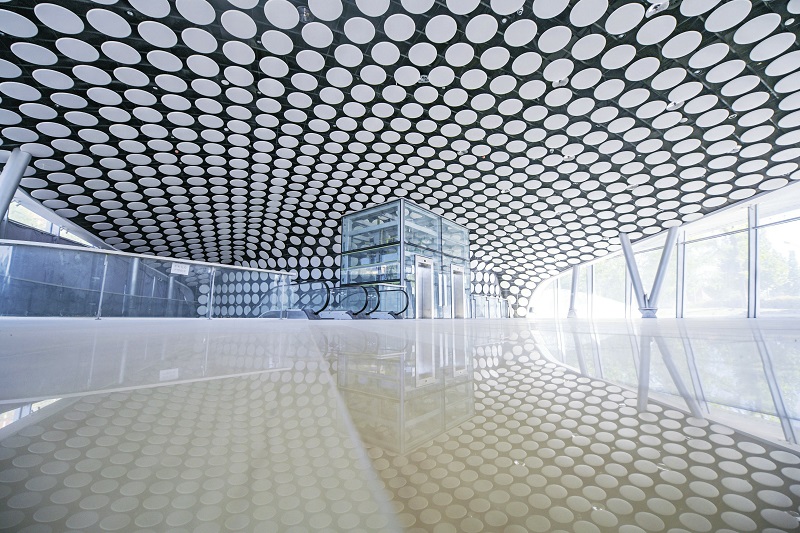
The Beijing Winter Olympic Village will provide athletes with various services such as catering, entertainment, commercial services, and cultural experience.
In the Beijing Winter Olympic Village (Winter Paralympic Village), the operation area has been renovated and converted from an old factory. The cozy yet elegant apartments for athletes reflect the design approach that puts users first. In addition, athletes can enjoy entertainment, leisure, and shopping at the square area. During the Beijing Winter Olympic Games and Paralympics, athletes will live safely, comfortably, and healthily.
When bidding to host the 2022 Winter Olympics, Beijing put forward three concepts for running the Games – athlete-centered, sustainable, and economical. The apartment designing fully adheres to these three concepts, and places the highest priority upon the lives and health of athletes and officials. The purpose is to create a comfortable and healthy home for every resident while adhering to the prevention and control measures against the COVID-19 pandemic.
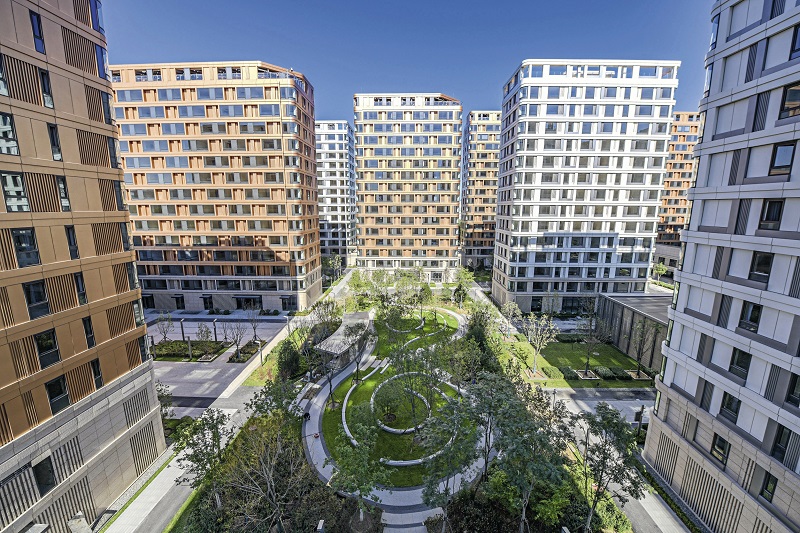
The Chinese cultural elements exhibited in the village reflect an integration of Olympic culture and the elegance of traditional Chinese culture.
Well-Designed Functional Areas
The village includes a residential area, operation area, and a square. The operation area is used for delegation arrival and departure, registration, security checks, protocol, and media reception during the Games. The spacious lobby on the first floor will function as the delegation reception center and the first stop for athletes and coaches upon reaching the village.
The red brick lined structure has steel amalgamated throughout due to its industrial heritage. In order to host economically efficient Games, an old factory complex that included 15 buildings was renovated and transformed. On the basis of preserving the existing buildings as much as possible, 12,600 square meters of external walls were renovated. Meanwhile, the interior was renovated, and water, electricity, and gas pipelines were re-laid. Corridors were also built between the buildings. The fully transparent glass curtain wall provides ambient lighting and warmth.
“After passing through the security check at the entrance, athletes will complete their registration here and move into the residential area,” said Hui Xiaofei, venue and infrastructure manager of the Beijing Winter Olympic Village. The operation area will also set up a special luggage storage area to facilitate the registration, as well as small meeting rooms to facilitate delegations to receive certificates. The media center is located on the southernmost side of the operation area.
The residential area is divided into two districts, east and west, and consists of 20 apartment buildings. Even from a distance, the two-toned orange and silver colored apartment buildings can be seen arranged in an orderly manner.
“The combination of warm and cold colors is especially adopted for this winter event. Twelve of the buildings have orange facades, and the rest are silver,” said Huang Hui, director of the Urban Stadium Construction Division of the Beijing Major Projects Office. According to him, the design concept for these apartments comes from Beijing courtyards. A cluster of 20 buildings forms six to seven courtyards, of which two courtyards are relatively large, while the others are much smaller, made up of two or three buildings. The variations between enclosed and open spaces are used to give a sense of community where the residents living in each building can enjoy a garden view, said Huang.
Chinese cultural elements embodied in these courtyards reflect the integration of Olympic culture and the elegance of traditional Chinese culture. “The design of the two large courtyards is inspired by a painting from the Qing Dynasty (1644-1911) which portrays a scene of people playing bingxi (a winter activity regularly performed for imperial audiences) during Emperor Qianlong’s reign. The addition of other landscaping plants creates an artistic conception of Chinese classical gardens,” Huang explained.
During the Winter Olympics, 18 apartment buildings (nine in each district) will be put into use. By then, 2,234 guest rooms will be provided with a maximum of 2,338 beds. So far 1,670 people from 54 delegations have made reservations for the Winter Olympics. The Winter Paralympics is expected to receive 534 residents of 20 delegations. Only nine apartment buildings in the west district will be opened during the Games, providing 1,040 guest rooms.
The village also has a communal square outside. During the Winter Olympics, flags of all delegations will fly here, and the truce mural signing will also be held here.
The ground floor of the square houses 22 service spaces, including catering and entertainment, commercial facilities, and cultural experience among others. “This is one of the main areas for athletes and team officials to communicate and interact in,” said Yang Jingfeng, deputy director of comprehensive services under the operation team of the Beijing Winter Olympic Village (Winter Paralympic Village). He explained that under the closed-loop management for COVID-19 prevention and control, the square area will be an important place for athletes to entertain themselves, relax, and shop. It is especially important to provide them with various high-quality services.
Under the square, a corridor and viewing ladders with a strong sense of design come into view. The soft lighting contrasts with the clean ground, which is extraordinarily bright and comfortable.
During the Olympics, athletes can enjoy one-stop services here, including printing, dry cleaning, flower shops, newsstands, travel agency, hairdressing, nail art, and convenience stores. In terms of commercial services, the Bank of China will provide various financial services, Air China will provide air ticket booking and rebooking services, Yum and Coca-Cola will provide fast food and coffee services, and China Post and Samsung also have set up service spaces.
The sunken plaza also has exhibition areas for traditional Chinese culture and Chinese medicine. The timing of the event coincides with the Spring Festival and Lantern Festival. The square area will combine the theme of the Winter Olympics and the elements of ice and snow to host traditional Chinese culture activities such as Chinese learning.
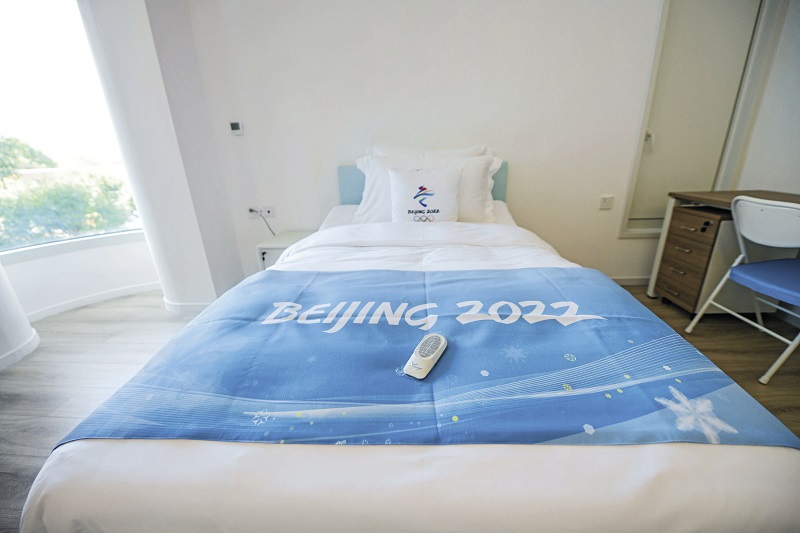
Beds in the apartments are adjustable to meet various guests’ needs of sitting or sleeping.
Comfortable and Elegant Apartment Designs
The apartments are divided into four types according to their sizes: 135 square meters, 165 square meters, 190 square meters, and 220 square meters. The rooms are well furnished. Azure bedsides, white walls, warm-color curtains, light-colored composite wooden floor, and dark furniture make the interior of the apartments look comfortable and elegant.
“In addition to a bedroom, bathroom, and living room, the apartments also have specially arranged functional spaces such as a delegation office and a meeting room,” said Li Bin, a residential service manager of the Beijing Winter Olympic Village.
Personalized care is reflected everywhere in the room. Each bedroom is equipped with a bed, bedside table, wardrobe, clothes racks, and table lamps. The buttons and sockets of the apartment buildings used for the Winter Paralympics are all low-position designs. The emergency button is located in a conspicuous place above the bedside table. In case of an emergency it can be activated with one key press and the information can be sent directly to the central control room.
In order to ensure that athletes get enough sleep and rest, the beds have comfortable memory foam mattresses, and are adjustable for different positions such as sitting or sleeping. These different usage modes can provide the best support for the human spine in different usage scenarios.
“The accommodations also fully take into account the needs of athletes with disabilities. The Paralympic Games rooms are equipped with complete barrier-free facilities. The sliding doors with handles are easy to access. The floor of the barrier-free toilets is a non-slip surface, and there are safety grab bars on both sides of the toilet, the wash basin is a desktop one with a height of 80 centimeters, the barrier-free shower has safety grab bars and shower stools. In addition, during the transition from the Winter Olympics to the Winter Paralympics, each bed’s height will be adjusted to fully meet the needs of the Paralympic athletes.
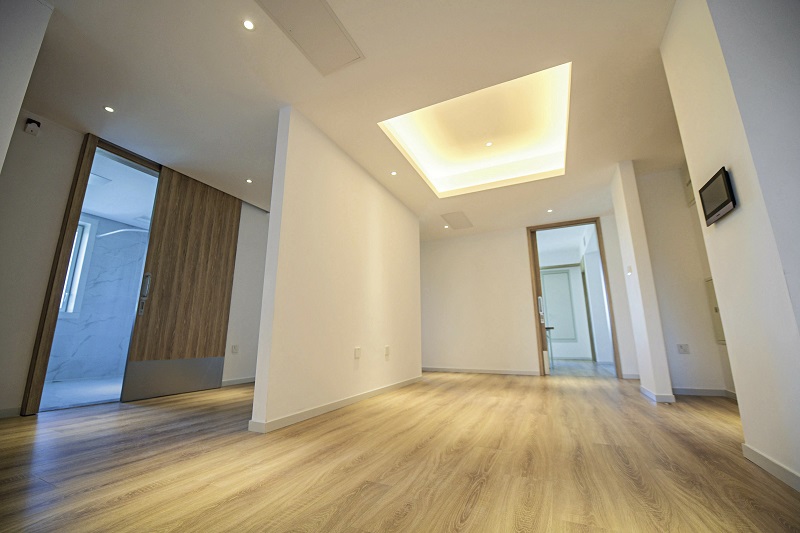
The design of the athlete apartments is simple and elegant, and the rooms are clean and tidy.
Highlighting Green Innovation
The village was constructed in accordance with the WELL Building Standard, a new benchmark in the residential construction sector. “Healthy Building” is a living concept which has gained traction around the world in recent years. The village construction emphasizes a “people-oriented” approach and pays attention to the emotional well-being of the residents. Ten systems including air, water, nutrition, light, sports, thermal comfort, acoustic environment, materials, mental wellness, and community and 112 standards create a more comfortable environment and facilities for athletes.
Each room has an independent primary air system, using high-efficiency haze removal modules and ozone removal modules. The fresh air volume is increased by 30 percent on the basis of general national standard, effectively reducing the indoor carbon dioxide concentration. The system can continue to provide fresh air to the room even when the window is closed. It makes the concept of a “breathing” residence a reality.
A small weather station is set up outside the apartments to measure parameters such as PM2.5, PM10, temperature, and relative humidity. Athletes can check the indoor and outdoor air quality through the lobby on the first floor.
During the Games, the whole village will be covered with 5G signal to provide athletes with top notch connectivity. The apartments are also equipped with wired telephones and cable TV access, so that athletes can enjoy being connected with the world.
Located in the sunken square, the Beijing Cabin will focus on displaying new technological achievements of the Winter Olympics, especially technological innovations in infrastructure, environmental protection, smart services, broadcasting services, and artificial intelligence.
According to Yang Jingfeng, new exhibition technologies are showcased here. To be specific, the digital space-time cabin mainly uses immersive methods to display ancient Olympian relics and Beijing’s cultural sites. The glasses-free 3D displays competition venues through digital projection. The Olympic Village Smart Management System displays the full view of the Winter Olympic Village in a three-dimensional and intuitive manner, as well as the integrated data concerning the environment’s health status, comprehensive energy usage statistics, and equipment operation status.
The village adopts the form of fabricated steel structure residences. “The interior uses a shear wall structure, a recyclable building material that can meet the requirements for post-Games transformation. By dividing the space again, it can meet the needs of a future residential space,” said Li Bin. After the Games, the apartments will soon be converted into public rental housing. All furniture is also rented, and can be allocated to other uses after the event to fulfill the needs of sustainable development.
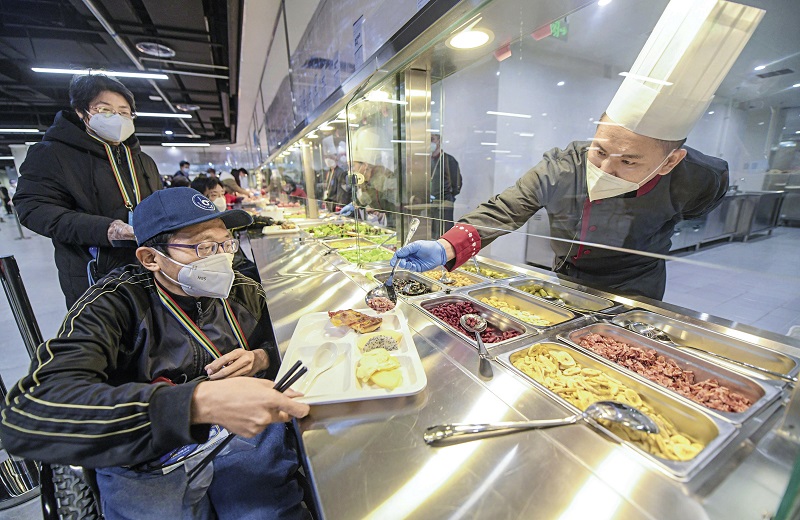
The rich variety of dishes served at meals in the village will satisfy residents from around the world.
REN SHAN and PAN ZHIWANG are reporters at Beijing Daily.